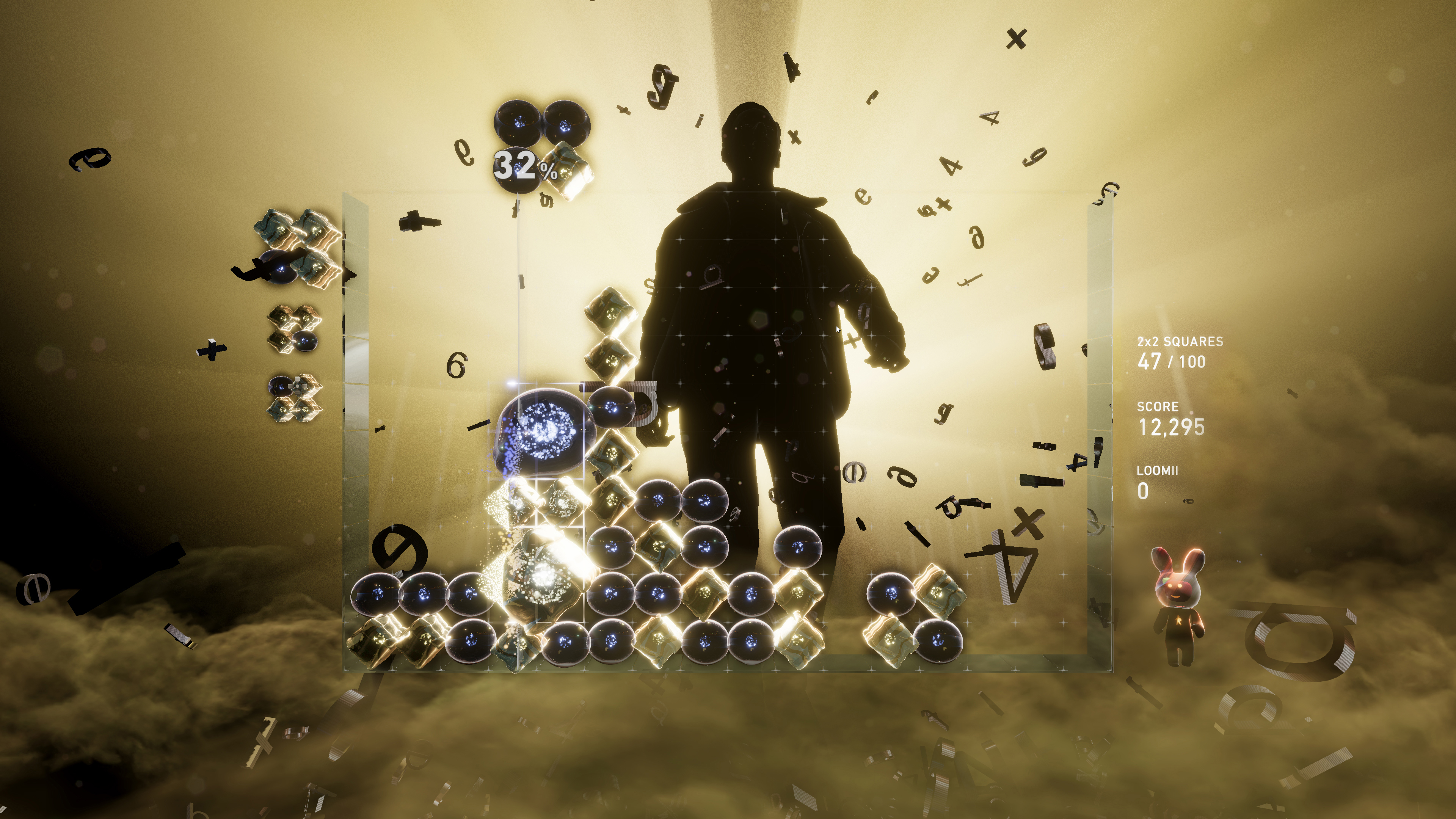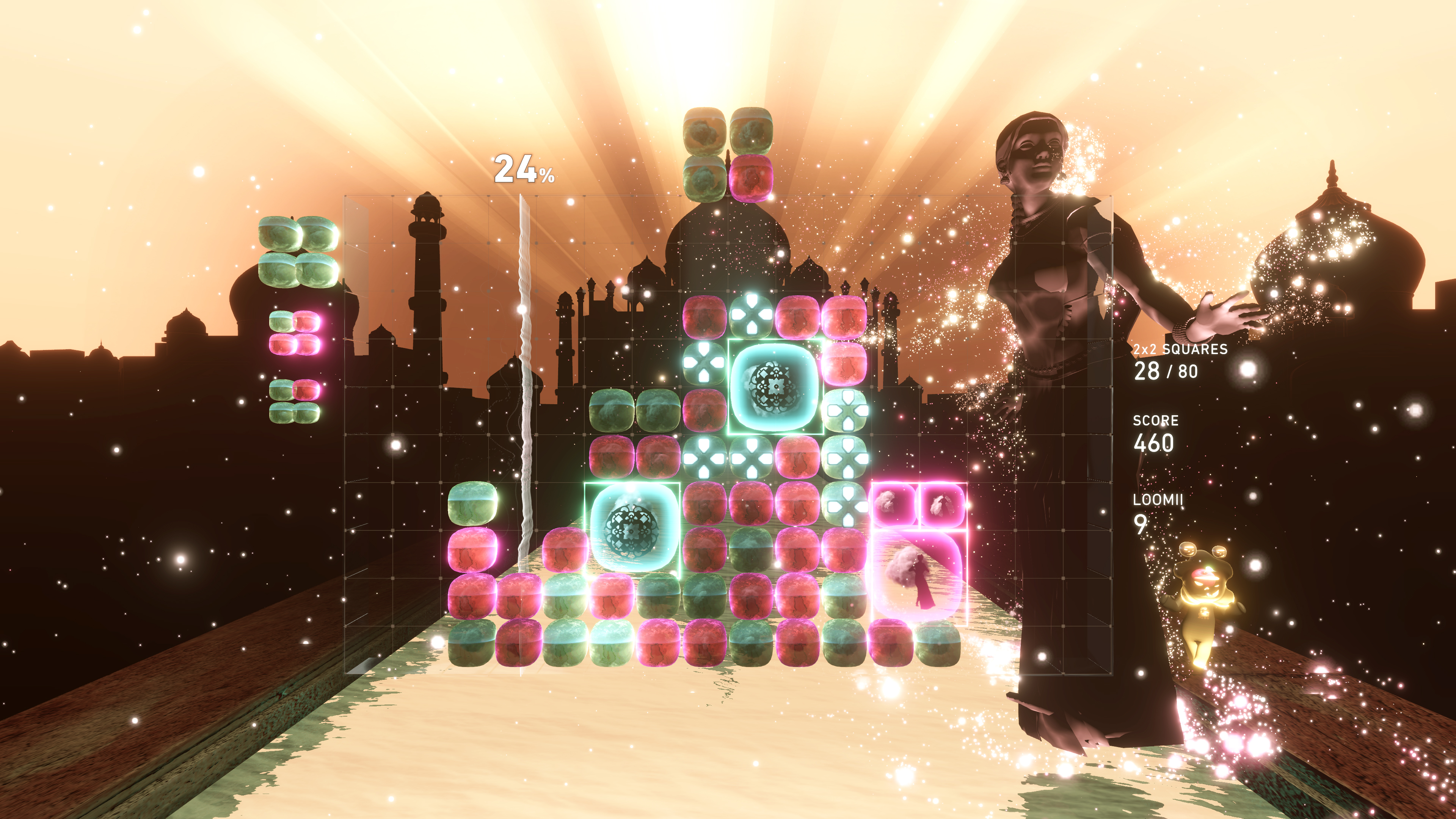Why I laughed with delight at the sheer visual audacity of Lumines Arise

Puzzle games have always felt at home on handhelds, if you think back to Tetris, which came packed in with the Game Boy. So it was all the more incredible when 2018's Tetris Effect took one of the most universally recognisable games ever – geometric, rhythmic, graphic – and transformed it into a kind of blockbuster epic with grand vistas and beautiful particle-based visuals that looked amazing on your big TV or in a VR headset (it's one of the best games for PSVR 2), all while still keeping the same gameplay fundamentals of dropping and rotating blocks that Tetris does.
At first glance, it would seem that independent studio Enhance is repeating the trick that made Tetris Effect so successful, with Lumines Arise, a new installment of the classic music-puzzle game.
While much of the genius of Enhance is usually credited to the studio's founder Tetsuya Mizuguchi, whose games have centered around harnessing the effect of synaesthesia since the original Rez on Dreamcast over 20 years ago, another important name is Takashi Ishihara. Serving as Lumines Arise's game director and art director, he's collaborated with Mizuguchi since 2011's Child of Eden, working on what he describes as "games that aren't gigantic titles, but for an independent developer studio and creator like myself, thematically had an epic and grand atmosphere".

The Tetris Effect on Lumines
Having also been the game director for Tetris Effect, it's easy to see how those learnings have gone into rebooting a game that originally debuted as a PSP launch title. Once again, Lumines Arise is a drop-blocking puzzle game with high-fidelity visuals, an original soundtrack from composers Hydelic, as well as a flow-inducing Burst mechanic that allows you to create an even larger square to score more points and clear more of the play field. Ishihara would argue that it's quite a superficial comparison: "It's not just about how gorgeous we can make the visuals, it's almost as if we're treating them as a living and breathing thing, down to the details of block design."
The original Lumines already had lots of background 'skins', which would change over the course of a playthrough, but what Arise does is also actually change the blocks themselves. As in not just the colour, but even the shape, so that they suddenly resemble objects or even contain mind-boggling details inside. It's best not to spoil exactly what you'll encounter, but when playing, I more than once had my jaw drop and sometimes just laughed with delight at the sheer visual audacity of what the team had conjured up.
"I think about one third of our time and energy was spent just creating blocks for this game," Ishihara explains. "So that's how much dedication and research went into the block design and the creation for Lumines Arise."

Making it personal
This parallels another intriguing creative choice. While puzzle games tend to be quite abstract, there's a very overt human element to what you see in Arise, starting with the first stage that begins with a person's silhouette in the middle, while later stages feature full character models and close-ups of faces. Ishihara attributes this to a response to the pandemic, when the concept for the game had quietly begun internal development.
Daily design news, reviews, how-tos and more, as picked by the editors.
"It was a dark time that everyone has experienced to a certain degree, so when starting this project, I wanted to plant a goal for this title to hopefully bring happiness to players," he explains, which in turn gave a direction that was more intimate than the "macro" epic feel of Tetris Effect, hence blocks that include everyday objects.
Ishihara adds: "I was also reading a lot of philosophers, and one common thing that kept coming up was that one's happiness arrives only after going through and overcoming different emotions a human goes through and overcoming different emotions."
Given that there are said to be eight basic emotions humans experience – fear, anger, sadness, disgust, surprise, anticipation, trust, and joy – it then made sense to create stages that would reflect each of these emotions, as Ishihara realised that rather than just focusing on "positive, happy-go-luck" themes, it's only by creating a sort of human drama in the journey that his end-goal of happiness will have the desired effect.

The move to Unity
Another area that had a lot of focus was the creation of Loomis, the in-game avatars. It was also partly the reason the team made Arise in Unity, after previously making titles with Unreal Engine.
"It's not just that they are cute-looking characters, but the volume that we were able to make by working on Unity, I don't think we could have gotten the same in Unreal," Ishihara says, adding: "Both engines have great qualities, but to strengthen some elements that we've been working on year over year on the Synaesthesia Engine side, we wanted to challenge ourselves to shift over to Unity and see how we can potentially express things in the way that we want to."
We wanted to challenge ourselves to shift over to Unity and see how we can potentially express things in the way that we want to
Takashi Ishihara, art director
So what is this 'Synaesthesia Engine', which also powered Enhance's past games, including Rez Infinite and Tetris Effect? According to Ishihara, it's loosely defined as a collection of bespoke modules the studio has developed over the years.
"It could be anything from expressing a morphing sort of effect to breaking down the sound waves and having that reflected in the visuals," he teases. "There are many things that we continue to push ourselves to get to a point where we are satisfied and ready to sort of implement and use in our creation. It's very wide-ranging and constantly in motion, but internally, that's basically the source bank of all that would be called the Synaesthesia Engine."
Lumines Arise releases on PS5 and PC on 11 November. Visit the Lumines Arise website for more info.

Alan Wen is a freelance journalist writing about video games in the form of features, interview, previews, reviews and op-eds. Work has appeared in print including Edge, Official Playstation Magazine, GamesMaster, Games TM, Wireframe, Stuff, and online including Kotaku UK, TechRadar, FANDOM, Rock Paper Shotgun, Digital Spy, The Guardian, and The Telegraph.
You must confirm your public display name before commenting
Please logout and then login again, you will then be prompted to enter your display name.
